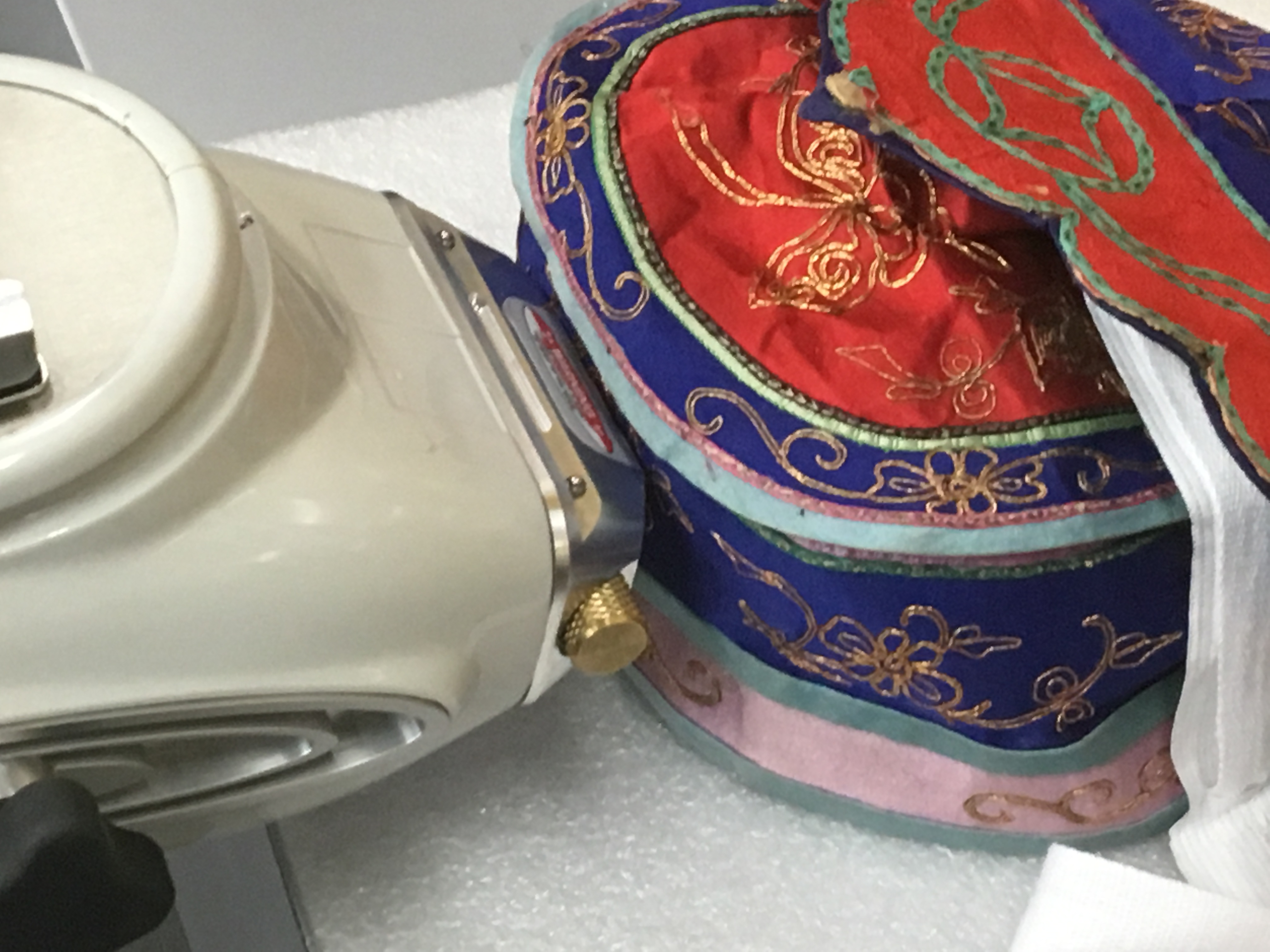The Materials Conservation Department at the Western Australian Museum (WAM) recently conserved and analysed artefacts collected in the 1890s by Australian missionary George Herbert Jose, while he was working in the Zhejiang province, China. They include a scroll, skirt, belt, collar, hats, shoes, origami book, as well as a bible and prayer book. The majority of these objects are composed of hand-stitched embroidered silk and are representative of traditional Chinese folk textiles from the Zhejiang province.
Structural distortion, as a result of inappropriate storage, was the main conservation issue addressed. There were many creases and fold lines, most likely causing localised stress to the silk fibers, which over time had resulted in structural damage. There were also several areas where the fibers were quite weak and susceptible to tearing.
Customised inserts made of Tyvek® and Dacron® were created to remove sharp creases and folds in the hats and skirt, while creases in the silk belt and scroll were reduced with indirect localized humidification using Reemay® and damp blotting paper. Japanese tissue was then adhered with methylcellulose to mend tears in the silk scroll. Methylcellulose was also effective in re-adhering loosened embroidery onto the silk belt.

XRF analysis—Image by Natasha Trenear
Fourier-transform infrared spectroscopy with attenuated total reflectance, and X-ray fluorescence, was then carried out to confirm the presence of gold in the metallic thread found on several of the textiles, as well as to confirm that the main material of the collection was indeed silk and not a synthetic imitation.
Acid free cardboard, with Cellair™padding and Tyvek® straps, was then used to create individual trays for several of the textiles. With each object attached to its tray, these artefacts can now be easily moved out of their storage units and examined by curatorial staff without the need for direct handling.